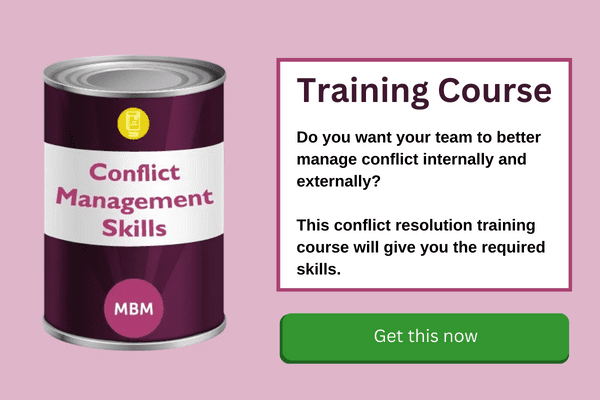54% of Workplace Bullies Have Been Bullying for More Than 5 Years.” – Anne Baranowsky
Ah, the joys of a busy team at work. Everyone knows each other but sometimes that doesn’t go as smoothly as it should. Covert bullying in the workplace is a real problem today. It can cost you your job, your health, and sometimes even your life. You’ve probably never considered yourself a victim of workplace bullying, but anyone can be affected.
Jump Menu:
- 1 What is Covert Bullying?
- 2 Behaviours of Covert Bullies
- 3 Why is Handling Covert Bullying Important in Leadership?
- 4 Difference Between Covert Bullying and Harassment
- 5 Examples of Covert Bullying in the Workplace
- 6 How to Deal With Covert Bullying at Work
- 7 How is Bullying Sometimes Excused?
- 8 Covert vs Overt Bullying
- 9 Covert Bullying Participant Roles
- 10 What is Pink Shirt Day?
- 11 Which Month is Anti-Bullying?
- 12 What Programs Are There to Stop Bullying?
- 13 How Can Companies Stop Bullying at Work?
Bullying is offensive, intimidating, malicious, or insulting behaviour as well as the abuse or misuse of power for purposes such as undermining, humiliating, demeaning, or hurting the victim. It can be easy to see, called overt, or hidden from those not directly involved, called covert. Bullying is committed by an individual against another individual (possibly by a manager or supervisor) or by a group of individuals. Either way, it could be blatant or sneaky. It is unjustified and unwelcome to the individual, regardless of its form.
We see the characteristics of the overt bully in movies and even in the workplace all the time. The loud, openly aggressive, downright blatant person who terrorizes employees’. But we never talk about the covert bully. The “innocent” bully. The one that causes incivility and unrest in the workplace behind the scenes. This type of bully usually likes to nuzzle up close to the boss. Covert bullies throw rocks and hide their hands. Like the overt bully, the covert bully can destroy the work environment if left unchecked.
Bullying in the workplace is a serious issue that has very real personal and business consequences. According to a 2017 study from the Workplace Bullying Institute, nearly one-quarter (23%) of bullied employees voluntarily leave their jobs in order to prevent the situation from worsening.
1. What is Covert Bullying?

Covert bullying is difficult to detect for people who don’t have interpersonal connections. It can include making strange or threatening gestures, whispering, excluding or turning your back on someone, and limiting where they can sit and who they can talk with.
Social or verbal bullying can be subtle and even denied by someone who claims to be joking or ‘having fun.’
Some bullying is both covert and indirect, such as subtle social bullying, which is difficult for others to notice. Bullying at school can include spreading rumours, threatening, blackmailing, stealing friends, breaking secrets, gossiping, and criticising clothes and personalities.
Indirect covert bullying primarily causes harm by harming another person’s social reputation, peer relationships, and self-esteem, causing psychological harm rather than physical harm.

2. Behaviours of Covert Bullies
- Maintains an image of innocence.
- Uses excessive supervision to intimidate.
- Spreads rumours.
- Takes credit for others’ work.
- Isolates.
- Lies.
- Avoids witnesses when creating incivility in the workplace.
- Causes confusion in the workplace.
- Deliberately withholds information.
- Manipulates groups and management.
- Usually likes to be the one that reports information to supervisors.
Remember, covert bullies, are great at manipulation and NOT getting caught. So, catching them in the act can be tricky. To remedy the workplace of covert bullies, leadership should:
- Schedule a meeting with HR to hash out the details.
- Build the case.
- Confront the bully, with facts and proof only.
- Remove ANY/ALL power from him or her. If this means removing him or her from their role, do so.
- Separate.
3. Why is Handling Covert Bullying Important in Leadership?

- It leaves the organisation open to harassment lawsuits.
- Mental health is wealth. Employees who are constantly being bullied will seek employment elsewhere. Thus, increasing the turnover rate within that organisation. Organisations can not afford to lose quality and meaningful talent to competitors.
- If employees feel as though leadership isn’t willing to do anything about the bully once the information and proof have been presented, the trust flies out the door. It will be difficult to regain that trust.
- The devastating work culture. Yes, of course, toxic work environments can be rebuilt. But, keep in mind, Rome wasn’t built in a day. It would be easier to build on and maintain a healthy work environment vs. rebuilding one.
Sticky Learning ® is 7 times more effective than 1-day training courses. Plus, you will get a Chain of Evidence proving your Return on Investment. Discover soft skills training that changes behaviours long term.

4. Difference Between Covert Bullying and Harassment
Covert bullying and harassment may appear to be similar in some ways, but they are not. Harassment appears to be similar to bullying in that someone causes harm to others through offensive, cruel, or abusive behaviour. However, it differs in that it is a form of discrimination.
1. Discrimination
Bullying turns into harassment when it focuses on treating people unfairly because of their age, race, religion, gender, family or marital status, or physical or mental disability.
2. Differences in Law and Approach
Bullying is a health and safety issue. Any workplace that tolerates bullying can be prosecuted for violating health and safety legislation. Harassment can be to anti-discrimination laws that prohibit sex-based discrimination or sexual harassment in the workplace. It differs from health and safety laws in that a victim of harassment may file a complaint with an outside agency.

5. Examples of Covert Bullying in the Workplace
1. Is Work a Source of Pain for You?
Constantly feeling sick or anxious before work is a sign of bullying.
2. Constant Criticism
Constant criticism from your boss despite your brilliance and goal-oriented competence is a sign of bullying Workplace bullies have a specific standard of bullying with their targets in mind.
3. Lots of Yelling
Bullies in the workplace will yell all the time to get their point across. It is a clear sign that you face bullying at work if coworkers are constantly yelling at you.
4. Records Your Mistakes
Your boss keeping track of your mistakes and bringing them up is bullying. Another tactic is to falsely accuse someone of making a mistake.
5. You are Alone
You are being bullied if you are frequently physically or socially isolated by your coworkers or boss. It can take the form of moving your desk or refusing to invite you to lunch or meetings.
6. Regular Mental Health Breaks
Perhaps you’re using up your paid leave for mental health days to get away from workplace bullying. Other indicators include a constant obsession with work or spending your free time feeling lifeless.

7. You Become the Victim of Sabotage
The workplace bully may try to find ways to ensure that you fail at your tasks. It could be as simple as changing rules related to your work in a hurry or failing to attend to your work, such as taking a call or signing off on some documents.
8. Inefficient Timetable
A bully would frequently change your schedule to cause you more trouble. Your boss constantly scheduling inconvenient last-minute meetings is bullying.
9. Stealing Credits
You worked on a project for days, nights, and weeks and it was a huge success, generating a lot of buzz at your workplace. If your boss or coworker constantly takes credit for your work then that’s a sign of bullying.
10. Constant Undervaluing of Your Efforts
Again, if you have given your all to a project and exhausted all of your resources to achieve significant results, you eventually achieve the success you desired. However, if your boss continues to look for minor errors or accuses you of not carrying out tasks in a systematic manner, you are being bullied at work.
11. Using Derogatory Language
If your boss or coworkers are intent on personally insulting you or keeping offensive names and encouraging others to call you by that name, recognise that this is an act of workplace bullying.
12. Unjust Punishments

If your boss punishes you unfairly for minor mistakes, you are bullied. A bully may even punish you arbitrarily, for no apparent reason.
13. Expands Responsibilities
A bully may even assign you impossible amounts of responsibilities with the intent that you fail to handle them all at once and thus fail to complete your work, in which case you are being bullied at work by your manager.
14. Uncontracted or Menial Work
A bully may assign you tasks that have less power but are more menial to limit your ability to advance or grow. A bully may even assign physically demanding tasks to you.
6. How to Deal With Covert Bullying at Work
1. Count to Ten
A bully enjoys emotionally manipulating others. It is thus strongly advised not to become emotional and encourage their behaviour. Simply remain calm and rational to resolve the problem. To give yourself time to process your emotions, try counting to ten before reacting.
2. Continue to Record the Issue
The crucial step of recording their workplace bullying experiences is frequently missed. To ensure that they don’t forget anything, the bullied employees must immediately record the incident. The documentation of key information will assist victims in regaining control of the situation.
3. Seek Outside Assistance
You can seek help from family, friends, or professionals such as a therapist or doctor. You must seek help as soon as possible because bullying can make you feel anxious, helpless, and depressed. When you are being bullied at work, it is important to know that others are willing to help you whenever you need it.

4. Never Make Yourself an Easy Target
When you shrink away from a bully, you are encouraging them to bully you. People will treat you the way you allow them to treat you, so you must instruct them on what behaviour is acceptable and what is not.
5. Advocate for Yourself
The key to standing up to the bully is to remain calm and polite. You must set boundaries while remaining professional. Practice how you would respond the next time your bully does something to you so that you can respond quickly and calmly.
Be simple and straightforward; do not get into verbal retaliation, instead look them in the eyes and remain strong.
6. Make a Business Case
Most managers are generally hesitant and unwilling to intervene in cases of workplace bullying. However, to address the issue, they must be persuaded. You are not required to provide details about the psychological harm because doing so makes you appear vulnerable.
7. Present Your Case in Financial Terms
Describe to the manager or human resources how the bullying interferes with or degrades the quality of work. Explain that you are requesting intervention to stop the bullying not only for your benefit but also for the sake of the employer.
8. Prepare for Retaliation

A bully would find a way to retaliate in subtle ways, making it difficult for anyone to identify the bully’s tactics and impossible for the human resource manager to take action against the people who bullied at work and keep addressing the issue in related meetings and asking for the company’s policies to protect you from retaliation. If the bullying persists and worsens, the bullied employee may take legal action.
7. How is Bullying Sometimes Excused?
- An attitude problem.
- A conflict of styles.
- Autocratic methods of leadership.
- Macho leadership.
- Strong leadership.
- Irrational behaviour.
- Weak interpersonal abilities.
8. Covert vs Overt Bullying
Bullying can be easy to see and detect (overt) or hidden, subtle and hard to detect (covert).
- Overt bullying involves physical actions such as punching or kicking or observable verbal actions such as name-calling and insulting.
- Covert bullying can be very difficult for someone outside of the interaction to identify. It can include hand gestures and threatening looks, whispering, excluding or turning your back on a person, and restricting where a person can sit and who they can talk with. Social bullying (spreading rumours, manipulation of relationships, excluding, isolating) is often covert bullying.
What is Not Covert Bullying?

There are also some behaviours, which, although they might be unpleasant or distressing, are not bullying:
- A mutual conflict involves a disagreement, but not an imbalance of power. Unresolved mutual conflict can develop into bullying if one of the parties targets the other repeatedly in retaliation.
- Single-episode acts of nastiness or physical aggression, or aggression directed towards many different people, are not bullying.
- Social rejection or dislike is not bullying unless it involves deliberate and repeated attempts to cause distress, exclude or create dislike by others.
9. Covert Bullying Participant Roles
Anyone can bully others. Individuals can take on various roles in bullying, and play different roles in different contexts.
Participant roles can include someone who:
- Engages in bullying behaviour.
- Assists the bullying and actively joins in.
- Encourages and gives approval to the bullying; they reinforce it through verbal and non-verbal cues such as smiling, laughing or making comments and signalling it is acceptable.
- Sees or knows about someone being bullied but for a range of reasons is passive and does participate in the bullying or support the target.
10. What is Pink Shirt Day?
So, who started Stop Bullying? In 2007, Berwick Nova Scotia classmates David Shepherd and Travis Price bought and distributed 50 pink shirts after a student at their school was bullied for wearing a pink shirt. With that act of kindness, Pink Shirt Day was born.
What Does a Pink Shirt Represent?

Pink Shirt Day is when many people worldwide wear pink shirts to prevent bullying. It’s a day to recognize those bullied individuals and to stand up for them. On this day, we all stand united to stop bullying by wearing a pink shirt or a pink button to give recognition to this very serious problem
11. Which Month is Anti-Bullying?
October is National Bullying Prevention Month, a time to focus on and raise awareness of bullying. During this month, many groups across the country will release new resources, campaigns, and efforts aimed at bringing awareness to the issue of bullying.
12. What Programs Are There to Stop Bullying?
- StopBullying.gov. StopBullying.gov, a collaborative effort of the U.S. departments of education, justice, and health and human services, provides information about the various types of bullying and who is at risk, as well as tools and guides to help identify and prevent bullying in schools and communities and an online bullying prevention training course.
- Olweus Bullying Prevention Program (OBPP). Clemson University’s OBPP (clemson.edu/olweus) is an anti-bullying program. According to research, a comprehensive program was developed to reduce bullying and foster safe school environments, for elementary, middle, and high schools. Participating in a training program or working with certified trainers can help schools implement the program.
- National Bullying Prevention Center. The National Bullying Prevention Center at PACER (pacer.org), which established National Bullying Prevention Month, offers anti-bullying resources for youth, educators, and parents. Websites for elementary school students and teens, anti-bullying classroom instruction and special events, handouts and research information, and programs to encourage student, school, and community involvement are among these.
- Stomp Out Bullying. Stomp Out Bullying (stompoutbullying.org) provides anti-bullying tools for educators, has a teen ambassador program that encourages teenagers to speak out against bullying in their schools and communities, and organises the annual Blue Shirt Day World Day of Bullying Prevention. They also have a Helpchat line for people aged 13 to 24 who need assistance.
13. How Can Companies Stop Bullying at Work?
The month of October is the ideal time to evaluate your company’s anti-bullying prevention strategies. Here are six steps your business can take to establish a zero-tolerance policy for bullying.
1. Establish a Formal Anti-Bullying Policy
This could be an addendum to your anti-harassment policy or a stand-alone policy to go along with it. Define bullying and communicate to your employees that such behaviour will not be tolerated in your policy.
2. Create an Open-Door Policy

An open-door policy is beneficial for a variety of reasons, all of which contribute to inclusive company culture. It can be useful in assisting company leaders in learning more about their business and their team so that they can continue to address both opportunities for improvement (such as the opportunity to offer benefits that are appealing to their employees) and issues such as workplace bullying prevention. The more involved top-level executives are in the company culture, the less likely it is that toxicity will develop without their knowledge.
3. Take All Allegations of Bullying Seriously
Companies that respond professionally and promptly to allegations of workplace bullying are more likely to find that their employees are more comfortable reporting incidents of bullying. Of course, the more bullying that is reported, investigated, and, ideally, eliminated, the less bullying there will be in the future.
4. Hold Managers Accountable
Manager bullying training is important for two reasons: the company communicates clearly that supervisory bullying will not be tolerated, and they typically have the most visibility into coworker peer-to-peer bullying behaviours.
5. Set a Good Example
A good rule of thumb is to praise in public and discipline in private. Managers set the tone for how their teams work. Public discipline is not right even if necessary.
6. Team Team Members How to Spot and Report Bullying
This training should teach them how to spot it in themselves and others. Some people may be unaware that their actions can be classified as bullying.

Conclusion
Bullying is offensive, intimidating, malicious, or insulting behaviour. Covert bullies are great manipulators and don’t get caught, so it can be tricky to catch them in the act. Employees will seek employment elsewhere, increasing turnover rates. It is important to educate yourself thoroughly regarding bullying to deal with it appropriately when it occurs. You need to set strong and evident limits so that your bully cannot break into the boundary you have set for them and they will eventually stop.




